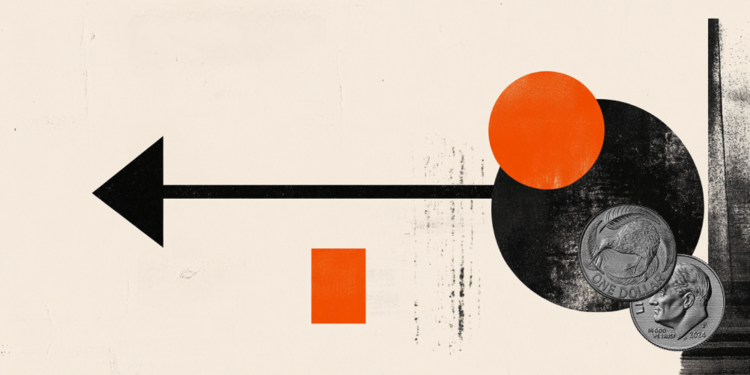- The Canadian dollar weakens as the close approaches.
- Canadian foreign investment barely moved the needle.
- US PPI numbers beat expectations, making rate cut bets difficult.
He Canadian dollar (CAD) It remained in the middle ground during the day on Friday, without finding much room in either direction against most of the major currencies heading into the close of the week.
In Canada, foreign portfolio investment in December Canadian Securities exceeded expectations, but in broader markets attention focused on the US Producer Price Index (PPI), which exceeded expectations. CAD traders will be keeping an eye on the Canadian Consumer Price Index (CPI) inflation numbers due out next Tuesday, and rate cut seekers will be keeping an eye on the latest Federal Reserve meeting minutes. ) that will be published in the markets next Wednesday.
Daily Market Summary: Quiet Friday for the Canadian Dollar
- Foreign Investment in Canadian Securities grew by $10.44 billion in December, well above the forecast of $6.45 billion. The previous month's figure was revised minorly to $11.31 billion from $11.43 billion.
- The US annualized core PPI rose 2% in January, above the forecast of 1.6% and up from 1.7% in the previous period (revised from 1.8%).
- The Michigan Consumer Sentiment Index rose in February, but less than expected, at 79.6 versus 80.0 expected, up from 79.0 in January.
- The University of Michigan's 5-year consumer inflation expectations were steady at 2.9%.
- According to the CME's FedWatch tool, money markets see a 70% chance that the Fed will not move rates in May, and June is now being considered as the first rate cut meeting.
- Next week's Canadian CPI is forecast to drop to 3.3% from 3.4% in January.
- January Canadian MoM CPI is expected to rebound to 0.4% from -0.3% in December.
- Minutes from the Fed's latest meeting will be released next Wednesday, and investors will scrutinize the latest Federal Open Market Committee discussions for clues about how close the Fed could be to pivoting toward rate cuts.
Quote of the Canadian Dollar today
Below is the percentage change of the Canadian Dollar (CAD) against the currencies listed today. The Canadian dollar appreciated against the Japanese yen.
| USD | EUR | GBP | CAD | AUD | JPY | NZD | CHF | |
| USD | 0.05% | 0.09% | 0.12% | -0.07% | 0.26% | -0.10% | 0.17% | |
| EUR | -0.05% | 0.02% | 0.09% | -0.12% | 0.21% | -0.14% | 0.12% | |
| GBP | -0.10% | -0.05% | 0.04% | -0.17% | 0.17% | -0.19% | 0.08% | |
| CAD | -0.14% | -0.10% | -0.04% | -0.20% | 0.12% | -0.24% | 0.03% | |
| AUD | 0.08% | 0.14% | 0.18% | 0.21% | 0.35% | -0.01% | 0.25% | |
| JPY | -0.26% | -0.21% | -0.16% | -0.15% | -0.37% | -0.35% | -0.08% | |
| NZD | 0.09% | 0.15% | 0.19% | 0.22% | 0.02% | 0.36% | 0.27% | |
| CHF | -0.18% | -0.12% | -0.07% | -0.03% | -0.24% | 0.09% | -0.27% |
The heat map shows the percentage changes of the major currencies against each other. The base currency is chosen in the left column, while the quote currency is chosen in the top row. For example, if you choose the euro in the left column and scroll down the horizontal line to the Japanese yen, the percentage change in the box will represent EUR (base)/JPY (quote).
Frequently Asked Questions about the Canadian Dollar
What factors determine the price of the Canadian dollar?
The key factors that determine the price of the Canadian dollar (CAD) are the level of interest rates set by the Bank of Canada (BoC), the price of oil, Canada's main export product, the health of its economy, inflation and the trade balance, which is the difference between the value of Canadian exports and its imports. Other factors are market confidence, that is, whether investors bet on riskier assets (risk-on) or look for safe assets (risk-off), with the risk-on being positive for the CAD. As its largest trading partner, the health of the US economy is also a key factor influencing the Canadian dollar.
How do Bank of Canada decisions affect the Canadian dollar?
The Bank of Canada (BoC) exerts significant influence over the Canadian Dollar by setting the level of interest rates that banks can lend to each other. This influences the level of interest rates for everyone. The BoC's main objective is to keep inflation between 1% and 3% by adjusting interest rates up or down. Relatively high interest rates are usually positive for the CAD. The Bank of Canada can also use quantitative easing and tightening to influence credit conditions, with the former being negative for the CAD and the latter being positive for the CAD.
How does the price of oil affect the Canadian dollar?
The price of oil is a key factor influencing the value of the Canadian Dollar. Oil is Canada's largest export, so the price of oil tends to have an immediate impact on the value of the CAD. Generally, if the price of oil rises, the CAD also rises, as aggregate demand for the currency increases. The opposite occurs if the price of oil falls. Higher oil prices also tend to lead to a higher probability of a positive trade balance, which also supports the CAD.
How does inflation data influence the value of the Canadian Dollar?
Although inflation has traditionally always been considered a negative factor for a currency, as it reduces the value of money, the opposite has actually happened in modern times, with the relaxation of cross-border capital controls. Higher inflation often leads central banks to raise interest rates, attracting more capital inflows from global investors looking for a lucrative place to store their money. This increases the demand for the local currency, which in the case of Canada is the Canadian Dollar.
How does economic data influence the value of the Canadian dollar?
The published macroeconomic data measures the health of the economy and may have an impact on the Canadian dollar. Indicators such as GDP, manufacturing and services PMIs, employment and consumer confidence surveys can influence the direction of the CAD. A strong economy is good for the Canadian dollar. Not only does it attract more foreign investment, but it may encourage the Bank of Canada to raise interest rates, resulting in a stronger currency. However, if economic data is weak, the CAD is likely to fall.
Source: Fx Street
I am Joshua Winder, a senior-level journalist and editor at World Stock Market. I specialize in covering news related to the stock market and economic trends. With more than 8 years of experience in this field, I have become an expert in financial reporting.







